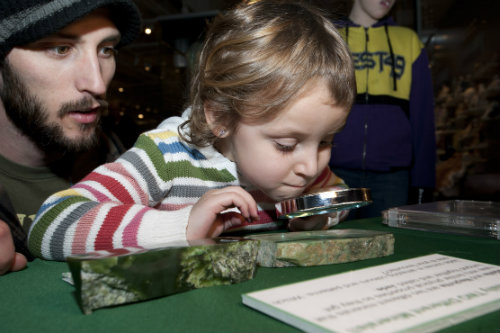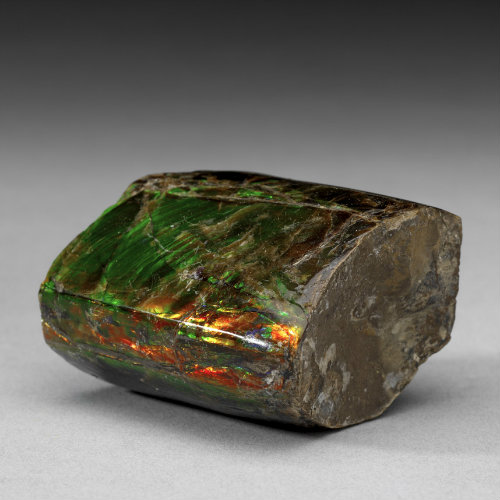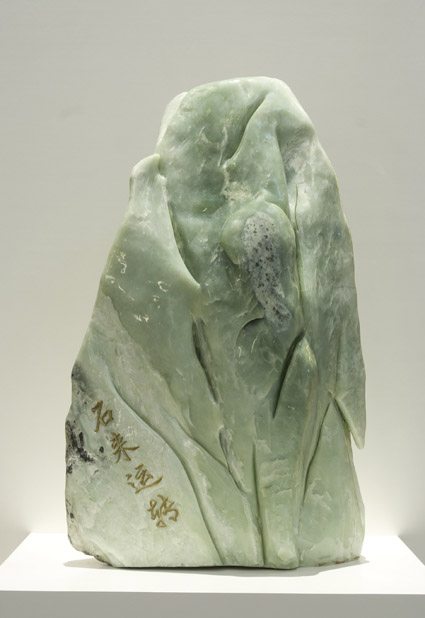Jade-Foolery: How to Recognize Minerals Disguised as Jade

March Break visitors inspect the minerals before deciding if they are jade.
This week, March Break visitors were invited to test their astuteness in the Teck Suite of Galleries: Earth’s Treasures (activity table open Monday to Friday only). With a collection of Jade-like objects and specimens aimed to trick the eye, your other senses become the most important tool in identifying real jade. Katherine Dunnell, Mineralogy Technician, gives us a short lesson on some of the minerals that may disguise themselves as jade.
The term jade is actually a lapidary term used to describe two rock groups that have predominantly the minerals jadeite or nephrite. Both of these minerals have similar properties so they have been lumped together under the term jade.
Jadeite is slightly harder with a hardness of 6.5 to 7 on Mohs hardness scale, comes in a a variety of colours, from lilac, to yellow, to white (otherwise known as mutton fat jade) but lighter in colour than it’s counterpart nephrite. Nephrite is the more widely found of the two types of jade, found on every continent, but is predominately mined in Canada (British Columbia). Nephrite is a typically seen in a dark green variety but can be found as colourless (white) as well. Nephrite is marginally softer than jadeite, with a hardness of 6.5. Both of these minerals within rocks are formed in metamorphic environments and both are incredibly tough and resistant, which is why they are tricky to carve and polish.
Many substances have been called jade; these are mainly greenish, generally hard rocks or minerals which resemble jade but they cannot be called jade. Here is a list of some of the jade-like natural substances sometimes incorrectly labeled as jade.
Serpentine
The most ubiquitous jade impostor is serpentine. Serpentine usually have a waxy or greasy feel to them, and are less hard than jade (hardness of 3.5 to 4) Sometimes you will see terms like lemon jade or new jade, which are both serpentines.
Quartz has a similar hardness to jadeite and nephrite but the agent that colours quartz to give it a green hue is the giveaway that this isn’t jade. In the aventurine specimen, tiny green chrome micas called fuchsite can be found imparting the colour. Chrysoprase is coloured not by mica but my nickel in the quartz. Both can be found in the lapidary trade, carved, or in pendants.

Quartz variety chrysoprase
Dyed Calcite
It is hard to imagine that rocks can be dyed, but it is true! Sometimes called “Mexican Jade’, the material is usually dyed calcite, and in some instances the calcite comes from a stalagmite/stalactite. The hardness of calcite is quite soft (a 3 on the Mohs hardness scale) compared to jade. It is less dense, so it doesn’t have the same heft as jade, and the last thing to look for are the concentrations of dye in lines or cracks in the calcite. Dye will pool in these cracks giving a deeper colour in these areas.



